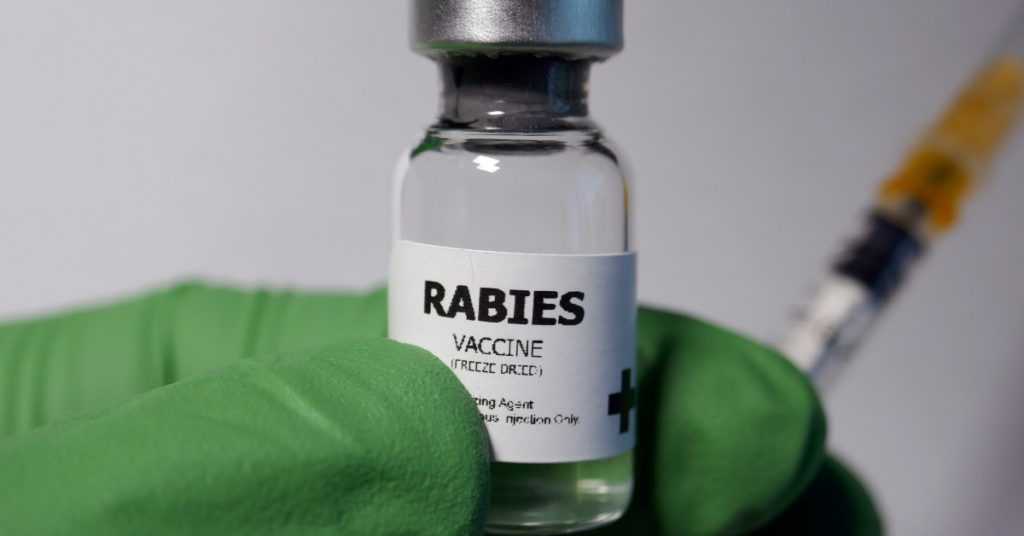Rabies virus is quite active in Pakistan and a few other countries. It is a viral disease causing thousands of deaths annually. It is currently the most neglected disease, with the frequency of dog bites on a constant rise. A study reveals that 3.3 billion live with the virus worldwide, and approximately 59,000 people lose their lives annually.
Animals that could transmit rabies in the United States include bats, coyotes, foxes, raccoons, and skunks. And in developing countries of Africa and Southeast Asia, stray dogs are the most likely to spread rabies to people. In Pakistan, the primary source of transferring the virus to humans is a dog. On average, 97,000 people get affected with rabies infection in the primary health units spread across the country.
You should know the symptoms and treatments of the rabies virus. Once a person begins showing signs and symptoms of rabies, the disease nearly always causes death. It is highly recommended to immediately visit a doctor after being bitten by a wild animal. You can consult with the best General Physicians now.


What is Rabies?
Saliva or tissues of infected individuals through bites or scratches quickly transfer this disease. Rabies is a form of zoonotic disease and therefore easily transferable between other species.
Rabies spreads through:
- Contact of mucous membranes of your eyes, nose, or mouth with the infected saliva,
- Inhalation of aerosolized saliva (although rare)
- Organ transplantation involving the cornea or any internal organ
- Eating the infected animal in raw form or consuming undercooked meat
It is a virus that infects the brain and ultimately leads to death. When a rabid animal bites someone, the virus infuses the muscle and subcutaneous tissue. The virus stays close to the exposure site during the incubation period (usually one to three months). After this period, the virus then travels via peripheral nerves to the brain and from there, again via peripheral nerves, to nearly all parts of the body.
Animals that can Transmit the Rabies Virus
A mammal can transmit the rabies virus. The list of the animals most likely to transmit the rabies virus to people include:
Pets and farm animals:
- Cats
- Cows
- Dogs
- Ferrets
- Goats
- Horses
Wild Animals:
- Bats
- Beavers
- Coyotes
- Foxes
- Monkeys
- Raccoons
- Skunks
- Woodchucks


Symptoms of Rabies Virus
We can observe the symptoms of human rabies can occur as fast as within the first week. There are some general symptoms of rabies. These include weakness, fever, and headaches. A patient with a history of potential exposure to a rabid animal would not raise the suspicion of rabies. Symptoms are very similar to the common flu or other viral syndromes.
Rabies Virus can Expose itself in Two Forms:
Paralytic Rabies
It is visible in almost 20% of cases. It paralyzes the muscles slowly. Usually, it starts at the site of the bite. It is the less common form and ends in coma and death.
Furious Rabies
It appears in almost 80% of cases. It exhibits the classic symptoms of rabies-like:
- Encephalitis, causing hallucinations, confusion, and coma
- Confusion and anxiety (the patient is often overly active)
- Hypersalivation
- Hydrophobia (fear and avoidance of water)
- Aerophobia (fear of fresh air)
- Difficulty in swallowing
Diagnosis of Rabies Virus
There is usually no way to confirm whether an animal is rabid or passed on an infection. Lab tests may show you antibodies. But mostly, these may not appear until later in the development of the disease. The virus isolates from saliva or through a skin biopsy. When the diagnosis is complete, it may be too late to take action.
In these cases, the patient will generally start a course of prophylactic treatment at once without waiting for a confirmed diagnosis. When a person develops symptoms of viral encephalitis following an animal bite, they should be treated as if they may have rabies.
Is There a Cure for Rabies?
By the time the signs of rabies appear, the disease is almost always fatal. Still, you can prevent rabies if you start its early treatment. If you are in contact with an animal with possible rabies, you must contact the health department or a medical facility. It will advise on rabies prevention treatment.
The treatment includes a first dose of vaccine and another protective injection. After this, 4 more doses of vaccine are administered over 28 days. Immediately after exposure and before symptoms begin, a series of shots can save the virus from thriving. It is usually adequate.


Treatment Strategies for Rabies Virus include:
A Fast-acting Dose of Rabies Immune Globulin
Human rabies immune globulin (HRIG) is given to previously unvaccinated people only once, at the start of anti-rabies primary prevention. This will provide immediate antibodies until the body is able to respond to the vaccine by actively producing its own antibodies. If possible, the entire dose of HRIG should be infiltrated into and around the wounds.
A Series of Rabies Vaccines
These are injections injected into the arm over the next 2 to 4 weeks. These can prepare the body to fight the virus whenever it finds it. Mostly, it is impossible to find out whether the animal has rabies or not. It is safest to assume the worst and begin the course of shots. Only a few people have survived rabies, but most cases are fatal once the symptoms develop. There is no effective treatment at this stage. A person with symptoms should be made as comfortable as possible. They may need breathing assistance.
Rabies Vaccine
The rabies vaccine is the best for the people at high risk of rabies to protect them if exposed. People at increased risk of exposure to rabies should be offered pre-exposure rabies vaccination, including:
- Veterinarians, animal handlers, and veterinary students
- Rabies laboratory workers
- Spelunkers (people who explore caves), and
- Persons are working with the live vaccine to produce rabies vaccine and rabies immune globulin
Studies show that every year, more than 29 million people worldwide receive a post-bite vaccination. It is a safe way to prevent hundreds of thousands of rabies deaths annually. The rabies vaccine is available under different brand names: HDCV, Imovax, and rabies vaccine human diploid cell culture.
Prevention from Rabies Virus
Tips to Prevent Rabies in Pets
Go to your veterinarian with your pet regularly and keep rabies vaccinations up-to-date for all cats, ferrets, and dogs. Ensure control of your pets by keeping cats and ferrets indoors and keeping dogs under direct supervision.
Use spray or neuter your pets to help reduce the number of unwanted pets that may not be adequately cared for or vaccinated regularly. Regularly engage animal control to remove all stray animals from your neighborhood since these animals may be unvaccinated or ill.
Tips to Prevent Rabies in People
Stay away from wild animals alone. Keep a distance from wild animals even if they appear friendly, and do not coax a wild animal to eat from your hand. Never scare fear wild animals, just respect and stay away from them. Avoid keeping wild animals as pets. Even a raccoon or skunk born in captivity may indeed be a rabies carrier. Some local laws prohibit acquiring or keeping such animals as pets. No approved vaccines are available for these pets.
Regularly clean your property and make it unattractive to wild animals. Cover chimneys and seal off any openings in attics, under porches, and in basements. Choose to feed your pets indoors and keep trash cans adequately locked.


What to do If YOU are Bitten, Scratched, or have Contacted with an Animal?
- Immediately get the owner’s address and telephone number if possible
- Wash the wound thoroughly without delay, cleaning, and flushing with plenty of soap and water for several minutes
- Inform all animal bites to your animal control agency, the police department, or the health department
- Pin down and continue to observe the animal (if wild or stray) aid its eventual capture, but do not risk exposure again
- Seek emergency medical attention. You can contact your family doctor or go to the nearest emergency center.
Risk factors for Rabies
Following factors can increase your risk of rabies :
- Living or traveling in developing countries where rabies is more common, including countries in Africa and Southeast Asia
- Involving in the activities that are likely to put you in contact with wild animals that may have rabies. Or exploring caves where bats live or camping without taking precautions to keep wild animals away from your campsite
- Staying in a laboratory with the rabies virus
- Wounds to the head or neck, which may help the rabies virus travel to your brain more quickly
The Bottom Line
We can work together to create awareness about the various health disorders and viruses affecting Pakistani society. It will play a substantial role in decreasing the mortality rate among adults and children. It will also work for preventable diseases and infections by a considerable margin.
The World Health Organization (WHO) calls rabies “100-percent vaccine-preventable disease.” They note that at least 70 percent of dogs in an area must be vaccinated to break the transmission cycle. So, to keep yourself safe please follow the given safety measures. But if you or someone you know has been bitten by an animal recently please visit a doctor immediately.
FAQs
1. Where do you find rabies most commonly?
It is common throughout the world, particularly in Asia, Africa, and Central and South America. It’s not found in the UK, except in a small number of wild bats.
2. How long can you live with rabies?
Rabies is an incurable disease, and it is almost always fatal. Once clinical signs occur, an infected animal usually dies within five days.
3. How to identify the early signs of rabies in humans?
The first symptoms of rabies may be very similar to those of the flu, including general weakness or discomfort, fever, or headache. These symptoms may last for days.
4. What is the time limit to get a rabies shot after an animal bites you?
If a dog, cat, bat, or other mammals you might suspect has rabies has bitten you, get to the doctor. It is good to take the first dose of the vaccine within the first 24 hours after exposure.
Book an appointment now, to answer all your queries. You can book an appointment with Best Doctors through Marham by calling at Marham helpline: 0311-1222398 or by online appointment booking facility through the website or Marham mobile app.
Can’t Find The App?
Android Users:
https://play.google.com/store/apps/details?id=controllers.marham.marhammed&hl=en
Drop a review for us at Playstore if you’ve had a good experience!
iPhone Users:
https://apps.apple.com/pk/app/marham-find-a-doctor/id1095243102
Stay Home Stay Safe!

